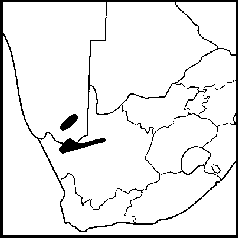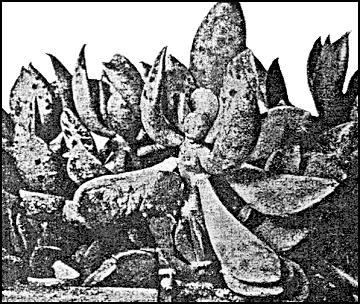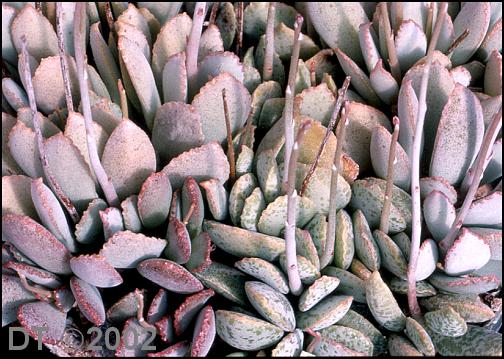
DISTRIBUTION
Originally described from the Karasberge, SE. Namibia. Now plants in N. Bushmanland in the N. Cape are included. There is a continuum of scattered populations N-S. across the
Orange River nearly as far inland as Upington.
CHARACTERS
The
leaves show much variation between each isolated population. The original description called for leaves larger than the typical subsp. but usually they are smaller, narrower with a pointed leaf tip. There is
often a wavy, horny margin around at least the upper half.
COMMENTS
In his identification keys, Tölken
differentiated this subsp. by longer, sparsely branched stems,
40-80(-100) mm long, even though the original description said "up to 7
cm high" (and may well have included leaves).
A wider application of this name is now made here including plants around Pofadder (mentioned by Tölken under A. trigynus). Field searches S. of the Karasberge have revealed only short
stemmed plants up to 1” long, even when growing in shaded rock cracks.
Some long stemmed plants were seen close to Keimoes, near the Orange
River.
However, be cautious about writing the name subsp. juttae on your labels - it is hardly worth separating from A. schuldtianus.
|

The original
illustration by von Poellnitz in
Kakteenkunde (1939) p. 52.

Multiple
clones of A. schuldtianus subsp. juttae SH 473/87
from Maraisvlei, NE. Pofadder. |